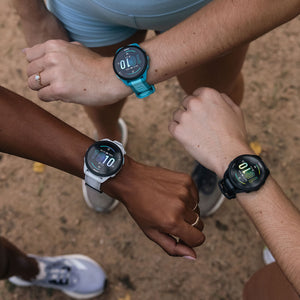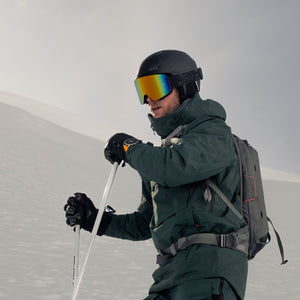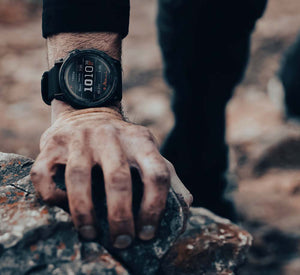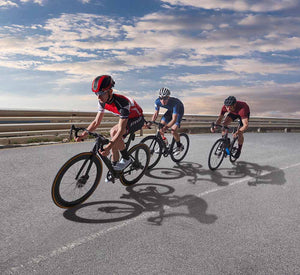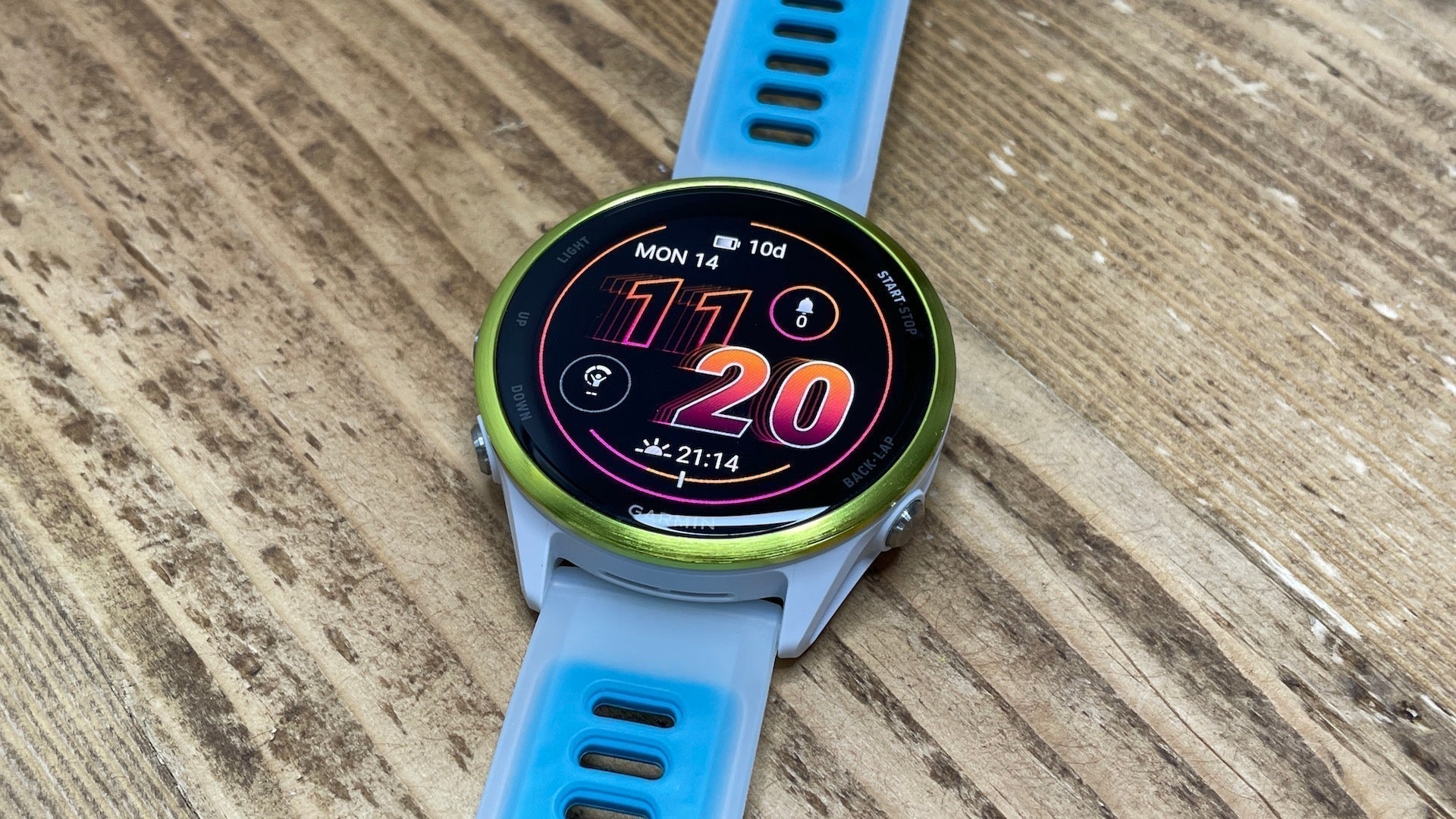
Garmin Forerunner 570 Review: Punched Up Performance but at a Premium
With Garmin’s brightest ever screen, advanced training tools, ultra-personalized insights and new race-day smarts, the Forerunner 570 is more than just a pretty face.
The Garmin Forerunner 570 is the newest mid-range training beast to swell the Forerunner herd. Out to rival the best running watches and fitness smartwatches, it lands with a fresh, colorful, sporty – and much more expressive – design. Plus a killer-bright AMOLED screen, the latest heart rate tech, dual-frequency GPS, new voice tools and some new swim, bike run smarts. But there are ups and downs when it comes to battery life and a significant price hike.
So while the Forerunner 265 was often seen as the sweet spot watch for its balance of smarts to spend, the question is: does the 570 still fit that bill? Is this, bang for buck, the best Garmin running watch? Get the verdict in my Garmin Forerunner 570 review.
Garmin Forerunner 570: Introduction and Design
The Garmin Forerunner 570 marks the end of Garmin’s 200 series and ushers in the 500 series era. Broadly speaking you get similar sport tracking, training, health and recovery firepower as the Forerunner 265, just with a snazzy new look, Garmin’s brightest ever smartwatch-style touchscreen, a few new smartwatch tools, and a $100 price hike.
The new 47mm Garmin watch touchscreen is bigger and brighter (up to 1.4” versus 1.3” on the Forerunner 265) and framed in an aluminum bezel that feels closer to high-end models like the fenix 8 and Forerunner 970. Unfortunately, you don’t get the full sapphire screen protection of those pricier watches, the 570 sticks with Corning Gorilla Glass 3.
The back casing remains plastic but that helps keep things relatively light. It’s slightly heavier than the Forerunner 265, but still light enough for all-day wear. The 42mm weighs in at 42g, the 47mm at 50g. It ships with 22mm quick-release silicone bands that are easy to swap out.
Garmin’s five-button controls work with the touchscreen and Garmin’s refreshed interface for a snappy, clean and intuitive experience that now makes it easier to move between workouts and apps and access your settings in key moments, like right before a session or race. It’s all fast, smooth and responsive.
There’s more new hardware beyond that sexy screen. The Forerunner 570 boasts Garmin’s latest Elevate Gen 5 heart-rate set-up – capable of tracking wrist temperature but not ECG – accuracy-boosting multi-band GPS plus an altimeter and SpO2 sensor.
There’s also a built-in speaker and mic which allows Bluetooth calling, voice commands, and you can bark some instructions at your connected phone’s voice assistant Siri on iPhone and Google Assistant on Android.
It’s water rated to 50 meters and comes with 8GB storage. Significantly less than you get on the 32GB Forerunner 970.
How I Tested the Forerunner 570
To test the Garmin Forerunner 570, I lived with the 47mm version on my wrist 24-7 for two months.
I raced the 55-mile Comrades Marathon with it, trained with it, travelled with it, slept with it and put it up against some rival fitness smartwatches like the Polar Grit X2 and some much pricier and more advanced sports watches, including the new Garmin Forerunner 970 and the Garmin fenix 8 AMOLED.
I tested the AMOLED screen in all kinds of conditions, delved into the training, recovery, health and navigation features. Analyzed my training data, dug deep into the GPS tracks and used the Garmin HRM Pro+ and HRM 600 chest straps to test the reliability of the optical heart rate.
After all of that, I’ve rated it for comfort, features, accuracy and battery life.
Models, Sizes & Prices
The Garmin Forerunner 570 comes in two case sizes: 47mm and 42mm.
Garmin has gone all out with the expressive designs with the 570. There are six different color combinations for the finish on the titanium bezel and the strap. Everything from simple all black to the much more expressive Indigo Aluminum with Translucent Imperial Purple/Indigo Band and Raspberry Aluminum with Translucent Bone/Mango Band. The 22m bands are also swappable.
At launch, the Garmin Forerunner 570 price was $549.99 regardless of the case size. That’s a $100 price bump over the Forerunner 265 and puts it alongside the priciest mid-range options like the Polar Vantage V3 ($599.99) but a big chunk above AMOLED rivals like the COROS Pace Pro ($349), the Suunto Run ($249) and the Suunto Race ($399).
Garmin Forerunner 570 Battery Life
On paper, for the 42mm, the Garmin Forerunner 570 battery life is listed at 18 hours tracking in regular GPS mode, 13 hours in All Systems Multiband GPS mode, falling to 8-9 hours if you use the music. You also get up to 10 days in smartwatch mode.
The 47mm Garmin Forerunner 570 battery life claims a little more smartwatch mode staying power with 11 days and a touch more in All Systems Multiband GPS mode with 14 hours.
In testing, the Garmin Forerunner 570 47mm battery life largely lived up to billing. Though I found I was charging it more frequently than the 10 days with regular daily training.
In total, I got 4 days of general usage with 2 hours GPS training before I had to pop it back on charge.
On average, with the Always On screen switched off, using the max-accuracy All Systems + multiband GPS mode, an hour’s run burned 4%. Meanwhile, a 9-hour run in the same settings burned 55%.
If you extrapolate and take into account the burn rate speeds up when you get towards empty, that comes up around 16 hours.
The Garmin Forerunner battery life headlines:
- 4 days general use with 2-hr GPS workout
- A 1-hour run with All Systems + multiband GPS on average burned 4%
- The average overnight burn was 3%
Running, Fitness and Health Features
The Forerunner 570 might not be the most fully featured Garmin GPS watch – the lack of offline maps and ECG are two of the major omissions and the Forerunner 970, the Fenix 8 and the Enduro 3 all offer more firepower.
But this new Garmin watch offers the most comprehensive feature set you’ll find on any mid-range multisport watch or AMOLED fitness watch. And it pushes this mid-range Garmin closer to premium territory with coaching tools, race intelligence, recovery guidance, and broader sport support. There’s enough here to cater for beginners and serious runners and multisport athletes alike.
The list of features is too long to cover here but essentially, whether you’re training for your first marathon, triathlon or exercising for general fitness, there’s everything you need to train, race, monitor sleep and recovery and keep tabs on general activity and health.
Garmin has 27 new sport modes and some interesting new tools for runners, triathletes and golfers.
From a Garmin running watch perspective, standout new run smarts include an all-new auto-lap feature that snaps your laps to the actual markers of known race routes, for more accurate splits. If you forget to stop your watch in the post-run euphoria, Suggested Finish Lines trims unwanted data. The Forerunner 570 also now spots when you’ve hit the track, locking you to lanes for accuracy.
And there’s a new race time predictor that estimates your potential performance if you keep training well all the way through to the race date.
If you’re planning to use this as a triathlon watch, Garmin has added a Garmin Triathlon Coach serving up free, adaptive training plans tailored to your performance, recovery, and metrics. You can also do multisport workouts and switch seamlessly between disciplines.
Meanwhile, the Forerunner 570 golf mode now includes advanced golf watch features—hazards, distances, and even shot tracking.
Garmin also added a new Evening Report. A spin-off for the daily Morning Report feature, this pumps out a pre-bed summary of your sleep goals, tomorrow’s workout, weather, and schedule.
Smartwatch Tools
While Garmin’s watches still lack the extensive third party apps and tools you enjoy on proper smartwatches, its smartwatch smarts are the best in the sportswatch business.
All the basics are covered including smartphone notifications, weather updates, and calendar alerts, 8GB storage for offline music with Spotify and Deezer support, plus contactless payments.
The Forerunner 570 also serves up some new tricks. The big news is a new built-in speaker and mic that brings some voice control to simple watch functions. In practice, I found that a bit limited and sometimes hit and miss on the reliability. But the ability to take calls when your watch is paired with your phone is a dead handy upgrade.
Safety’s covered, too with Live Track location sharing (with a connected smartphone) and Incident Detection (a bit like Apple's Crash/Fall Detection) that can automatically share your location to emergency contacts if an incident occurs. You can also trigger this manually if you feel unsafe.
Garmin Forerunner 570 Heart Rate and GPS Accuracy
The Garmin Forerunner 570 offers multi-band GNSS (multi-frequency GPS) used in Garmin’s top-tier watches to boost tracking accuracy in dense urban areas or under tree cover. Along with Garmin’s SATIQ, that smartly adapts to your surroundings to balance accuracy and battery life.
The optical heart rate sensor has been upgraded to the Garmin Elevate v5. That’s the same as the Forerunner 970 but frustratingly, there’s no ECG on the Forerunner 570.
I tested the Garmin Forerunner 570 GPS accuracy and heart rate reliability against a selection of rivals, including the Garmin Forerunner 970, the Polar Grit X2 and the cheaper Forerunner 165. I also used a Garmin HRM Pro+ chest strap and the top-tier Garmin fenix 8 AMOLED as a benchmark.
My test runs were mainly around semi built-up urban streets with some open sky park runs and tree-covered river paths thrown in.
In testing, I was pleasantly surprised by the Garmin Forerunner 570 GPS performance against the pricier (and multiband) Garmin Fenix 8.
On everything from urban commutes to the tree-covered river runs and official races, the GPS performance was solid. On total distances, I was always within an ok margin for error. Even over the 55 mile Comrades Ultra the 570 came in on point and rivaled the 970 and Fenix 8.
On a twisty, turny city of London 10km course, the Forerunner 570 logged 10.14km, the Forerunner 970 logged 10.28km while the Fenix 8 clocked 10.25. All well within what you’d expect.
When you dig into the GPS tracks, it largely does a good job of snapping me to my routes. There are wobbles but every watch suffers the same. I had no complaints about GPS accuracy.
The heart rate accuracy also impressed, matching my test chest strap as well as any optical sensor we’ve seen. And performing as well, if not better, than rival opticals.
Bottom Line: Should You Buy the Garmin Forerunner 570?
The Garmin Forerunner 570 is a highly capable watch with good accuracy, a snappy design and some really standout USPs – the hero of which is that bright screen. The lack of offline mapping and ECG might put some off and the shorter battery life is a trade off. But if you can get past those omissions, this is a great looking watch with enough to cover the training, racing and recovery needs of most runners, riders and triathletes. If your budget stretches, it’s definitely ahead of the rivals like the Suunto Race and Polar Vantage V3.
Forerunner 265 vs Forerunner 570: The heart says Forerunner 570 but the wallet says go Forerunner 265 or maybe even the older Forerunner 965. The 570 comes at a premium and if you already own a Forerunner 265, there’s probably not enough here to warrant an immediate upgrade. Not unless you’re drawn – Golum-like – to the beautifully bright display and the more expressive early Macbook-esque color combos.
Forerunner 570 vs 970: If you want offline mapping, ECG, a longer battery life, a tougher display and that built-in flashlight, the 970 is the way to go.
About Journalist Kieran Alger
Co-founder of The Run Testers, Kieran Alger is an experienced journalist who has spent more than a decade testing running gear. Regularly found wearing four GPS running watches at once, if it claims to make you run better or enjoy running more, he has probably tested it. He's a borderline obsessed runner with more than 50 marathon and multiple ultra finishes. In 2022, he became the first person to run Europe's river Danube from sea to source, a measly 1,830 miles in 66 days. And still had time to test running gear.
Check him out on Instagram or his YouTube Channel!

